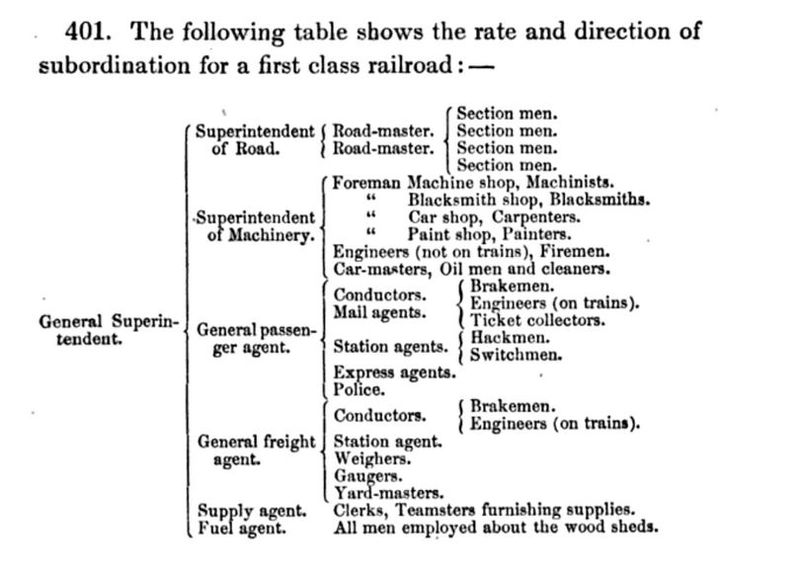Daniel McCallum drafted the first modern organization chart in 1857, to describe the complex reporting structure for New York and Erie Railroad.
 |
| The First Organization Chart |
This question of origin and history has haunted me ever since a lawyer asked for the organization charts for Michener Centre dating back to the 1940's. I looked hard enough to say with confidence that if these organization charts were ever made, they do not exist now. I advised that if such a chart was needed, the lawyer would have to pull back individual employee files to reconstruct the reporting relationships. A simple request had become a slog.
So organization charts are a useful business tool, and help clarify relationships. They satisfy an underlying need in all of us for order, clarity. The jungle of existence is cleared away and we have focus and direction. I recommend Weinberger's book to understand how the third order of organization - big data and the cloud - can turn this sense of order on its' head.
This being early morning, my first desire to capture this history (for my own peace of mind) was quickly followed by a recollection of my own working organization chart for the middle manager. I have used this chart many times to explain to colleagues and subordinates how middle managers keep tabs of the "front line" and how we simultaneously reassure executive that all is in order.
I start by drawing in the "front line", the life-blood of the company. These are the workers who have daily contact with the customers. I want my employees to be smiling, because I want my customers to be smiling. Empowered, happy, confident workers are made by great supervisors. The middle manager's job is to mentor, coach, and guide supervisors to be the best they can be at taking good care of those front-line workers.
The second half of the middle manager's job is to report to executive what is going on. They are too far removed from the day-to-day to know themselves if the front line is working and the customers happy. So they broadcast requests for information, and try and scout ahead. The good middle manager keeps executive abreast of what is going on, reporting on successes as well as potential problems before they become too large.
That's it. A little bit of book mining and brain mining. Find ways to be happy-happy, people.
